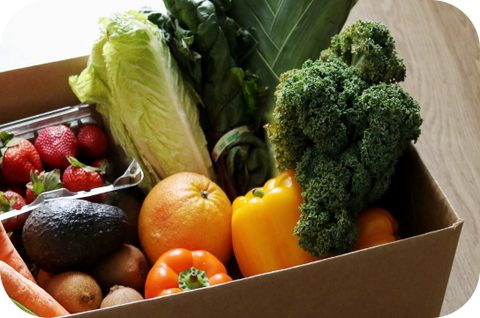

It's typical to think that all moulds are bad. Is that true? When is it safe to eat vegetables and fruits that have moulds on them?
What are moulds?
Moulds are a type of fungi that grow on food. Their ideal growing conditions are both high in moisture and nutrients—namely produce. They usually have roots (rhizoids and stolon) that invade the host matter, stems (sporangiophore) that are visible from the surface of food, and fruiting bodies that produce spores (sporangium). Spores are how moulds spread to different things, mainly via air, water, or insect carriers.
Are moulds dangerous?
There isn’t a straightforward answer.
Some moulds are beneficial in food production. A familiar example is cheese: Brie has surface moulds and blue cheese has veined/penetrating moulds!
Other moulds produce allergens that cause allergic reactions and/or irritants that cause respiratory issues. The real danger comes with moulds that produce mycotoxins, which cause food-borne illnesses and have serious health consequences. Populations most at risk include young children, seniors, people with asthma, pregnant individuals, and immunocompromised individuals.
How can you prevent mould growth?
-
Storage temperature: Store frigerated items at 4°C or below.
-
Avoid cross-contamination: Keep your produce and meat/poultry/seafood/dairy separate.
-
Storage cleanliness: Clean your fridge regularly.
What can you do about moulds on produce?
If the food is covered in mould, or the mould spots are visibly large, discard the food. Clean or discard any food that the mould may have touched, as they spread quickly in produce.
|
Type of Produce |
Examples |
Safe to Eat? |
Action |
Reason |
|
Firm vegetables and fruits |
Potatoes Carrots Bell peppers |
Yes |
Cut off >1 inch around the mould spot. |
Due to the low moisture content of firm produce, it is difficult for moulds to penetrate and spoil the entire item. |
|
Soft vegetables and fruits |
Cucumbers Peaches Tomatoes |
No |
Discard |
Due to the high moisture content of soft produce, moulds can easily contaminate the core and entire item. |
Sources:
